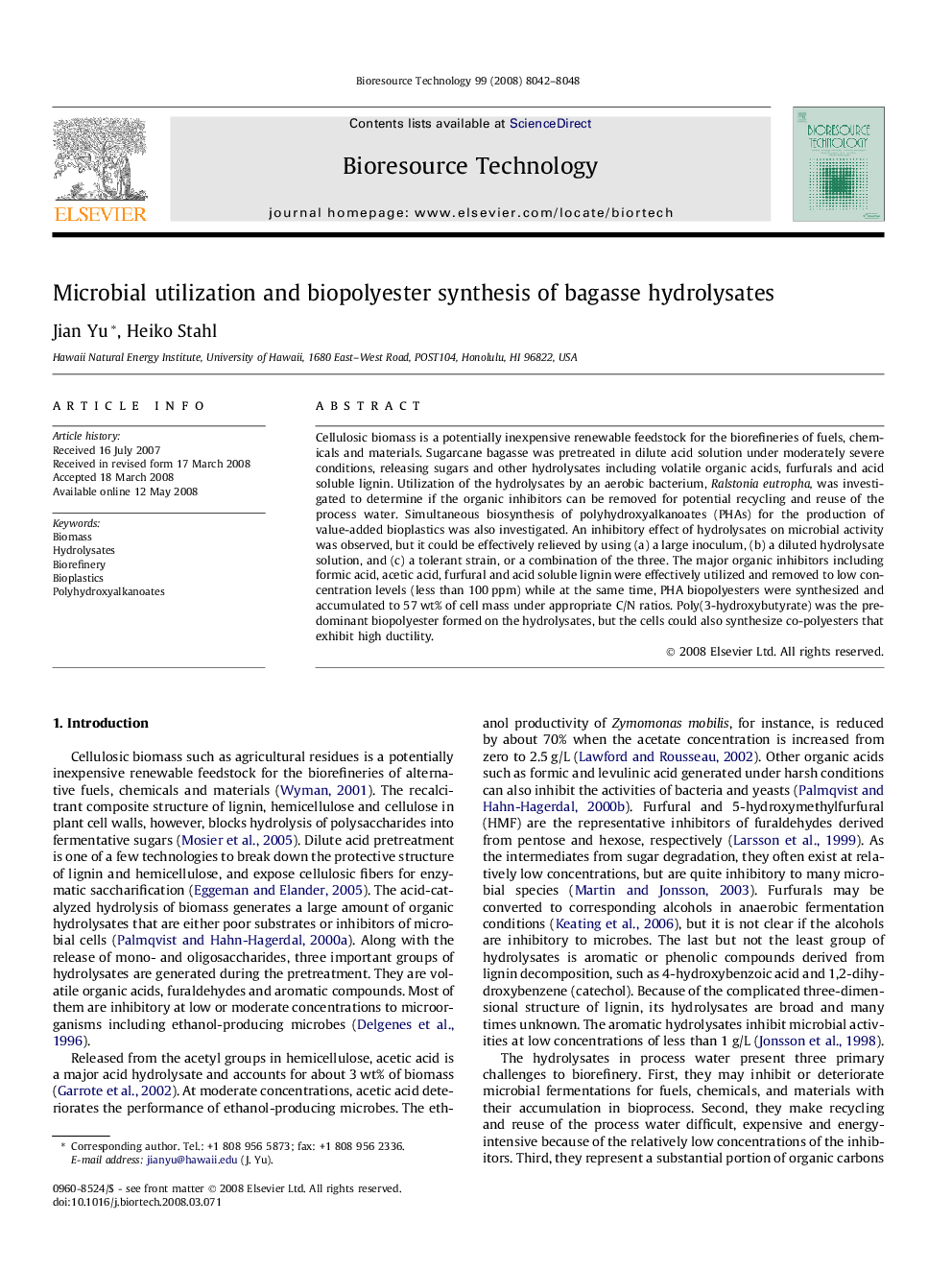| Article ID | Journal | Published Year | Pages | File Type |
|---|---|---|---|---|
| 684527 | Bioresource Technology | 2008 | 7 Pages |
Cellulosic biomass is a potentially inexpensive renewable feedstock for the biorefineries of fuels, chemicals and materials. Sugarcane bagasse was pretreated in dilute acid solution under moderately severe conditions, releasing sugars and other hydrolysates including volatile organic acids, furfurals and acid soluble lignin. Utilization of the hydrolysates by an aerobic bacterium, Ralstonia eutropha, was investigated to determine if the organic inhibitors can be removed for potential recycling and reuse of the process water. Simultaneous biosynthesis of polyhydroxyalkanoates (PHAs) for the production of value-added bioplastics was also investigated. An inhibitory effect of hydrolysates on microbial activity was observed, but it could be effectively relieved by using (a) a large inoculum, (b) a diluted hydrolysate solution, and (c) a tolerant strain, or a combination of the three. The major organic inhibitors including formic acid, acetic acid, furfural and acid soluble lignin were effectively utilized and removed to low concentration levels (less than 100 ppm) while at the same time, PHA biopolyesters were synthesized and accumulated to 57 wt% of cell mass under appropriate C/N ratios. Poly(3-hydroxybutyrate) was the predominant biopolyester formed on the hydrolysates, but the cells could also synthesize co-polyesters that exhibit high ductility.
